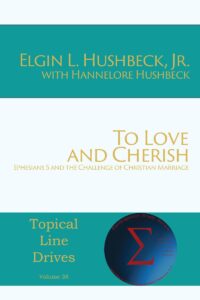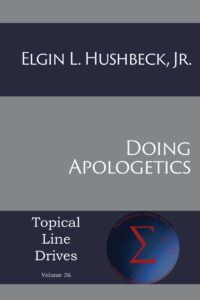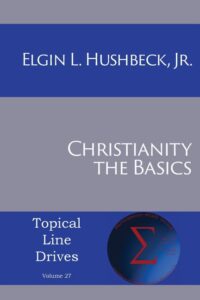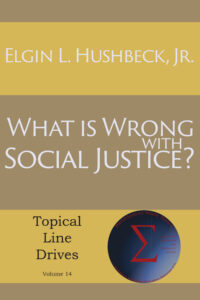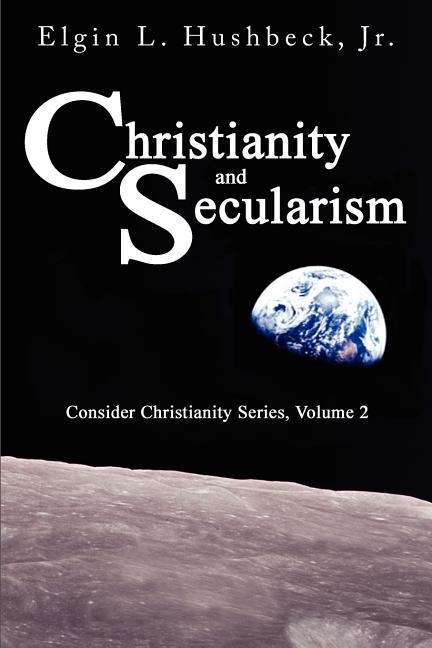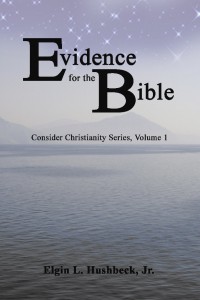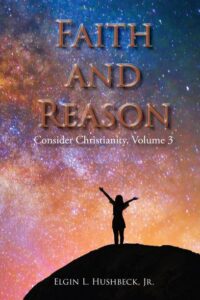The Epistles of John: Living in Truth and Love. 3 John 1-4
Wednesday, September 21st, 2011 by Elgin HushbeckWeek Two: Sept 18, 2011
3 John
Outline
The structure of 3 John is very close to a typical 1st century letter, and thus there is pretty broad agreement on the outline by scholars.
I.Opening
a. Address (1)
b. Prayer (2)
c. Personal Words for Gaius (3-4)
II.Body
a. Commendation of Gaius (5-8)
b. Criticism of Diotrephes (9,10)
c. Commendation of Demetrius (11,12)
III. Conclusion
a. Final words (13-14)
b. Greetings (15)
Study
I. Opening
a. Address (1)
1 – From:[1] The Elder
To: My dear friend Gaius, whom I genuinely love.
The Elder
The typical opening of a 1st Century letter contains 4 components: From, To, Greetings, and Prayer. John opens with the first two of these components.
John does not use his Name but rather his title. This would indicate that he had a position of great respect. Elsewhere the plural (elders) is used to refer to the leaders in a local church, (Acts 11:30, 1 Tim 5:17). It does not have quite the same meaning here as The Elder is apparently writing to a church other than his home church. Thus it would appear that The Elder is someone who had authority over many churches
The fact that John refers to himself as “THE” elder could indicate that John was the last of the twelve. The term elders would also indicate that John was elderly, though for the 1st century that is not saying much.
To: My dear friend Gaius
Gaius was a very common name in the first century, and so we really do not know who this is. Detailed address information would have been given to the carrier of the letter, which was probably Demetrius (v11-2). From the rest of the letter we know that Gaius was a Christian, was probably a prominent member of his church and that this church was most likely one of those under the care of John.
whom I genuinely love.
A genuine statement of affection.
For some reason John breaks with custom and does not include the formal greeting that would normally appear at this point. This also could be a sign of familiarity, i.e., to dispense with custom, or it could just be that John cared little for custom. He somewhat breaks with custom in 2 John and 1 John does not follow the format of a letter at all, though it is likely that 1 John is not actually a letter.
b. Prayer (2)
2* – Dear friend, I pray that you are doing well in every way and that you are healthy, just as your soul is doing well.[2]
Dear friend,
Another statement of affection. As we will see, John seems to use this and similar statements as a means of dividing up his letters. Here he does this just before starting his prayer.
I pray that you are doing well in every way
While skipping the traditional greeting, He does include the customary prayer.
The Greek word here (euodousthai) literally means “to lead along a good path” (Friberg) . In Romans 1:10 it is used literally … by God’s will I may at last succeed in coming to you. Here it is being used metaphorically, with the meaning “that your journey through life is a good one.” Outside of the NT it was also used to refer to gain or profit in business (Louw).
While spiritual welfare is important John does not limit his prayer just to that. He also prays that Gaius prosper and succeed.
and that you are healthy
Literally: To have well, an idiom for good health
While this does not indicate that Gaius had health problems, it does not rule them out. When we get to verse v9 we will see that health problems might explain some difficulties there.
just as your soul is doing well.
The Greek word for doing well here is the same as earlier in the verse. Here it indicates that Gaius’ soul is progressing well, so well that John prays that the rest of Gaius life is doing as well as his soul is doing.
Note: John is praying that Gaius do well both physically as well as spiritually, both are important to John. Getting the right balance between the physical and spiritual is tough.
c. Personal Words for Gaius (3-4)
3* – I have greatly rejoiced with every arrival of brothers that testified about your truthfulness [3]and how you live according to the truth.
I was overjoyed with every arrival of brothers that testified
John was not just happy but very happy. The Greek work for erchomenow is a present middle participle, and indicates repetition either by the same brothers many times, or by different groups of brothers. Either way, it is clear that John knew of Gaius, which is another indication that Gaius held a prominent position.
about your truthfulness
Literally “your truth.” This is more than just honesty, but also includes an adherence to the true. A key feature of Gaius’ faith was his adherence to the truth, i.e., to sound doctrine. This was so key that others would report on it.
and how you live according to the truth.
Gaius faith was more than just belief, he lived it as well. He put his beliefs into practice.
What would other say about us? What would their report be?
4 – Ihave no greater joy than to hear that my children are living according to the truth.
John stresses how much this pleased him. The word John uses for “greater” is an interesting one. The Greek word is meizoteran. In Greek the word for great is megas, which is where we get the English prefix mega-. Greek normally uses an ending (- teran ) to make a comparative, similar to the way English use the ending –er as in great + er is greater. But instead of using the normal ending Greek as a special word for greater : meizon. John, however really wants to make sure his readers understand just how great his joy really is, so he takes the Greek word for greater, and then for emphasis adds the –teran ending. In literal English, for him there is no “greaterer” joy.
my children
This could mean John led Gaius to Christ, or it could just be that he had spiritual authority over him.
What is our greatest joy? What is the greatest demand we put on our children? Is it School? Grades? Success? A particular career? If you were to ask parents today which was most important would it be that their children “live according to the truth” (or in secular terms that their children be good) ? Or would it be that their children get a good education and a career? More importantly, what would your children say was your greatest desire for them?
Questions:
One question that came up in class concerned the relationship of truth and love. A key problem is that living truth and living in love are sometimes in conflict. Living in truth requires a strict adherence to the truth. If we are not careful, this can lead to division and we find ourselves splitting over even minor disagreements about what the Bible teaches. On the other hand, living in love leads us to overlook differences in favor of just loving one another.
As with so many things this is a balancing act one of standing for the truth, but not in a cold doctrinal way, but one that stress Love, one where the focus is on reconciliation, not division. At the extremes it is pretty easy. We do not want to divide on minor issues such as whether the pre-mid-post tribulation rapture. On the other hand we do need stand firm on the deity of Christ. But as we get closer to the middle it gets harder to know exactly where the line is or just how we should respond. This is one of the main themes we will be looking at in this class.
Next week we will start in 3 John 5
If you have question about the class, feel free to send me an email at elgin@hushbeck.com and be sure to put “Epistles of John” in the header.
Scripture taken from the Holy Bible: International Standard Version®. Copyright © 1996-2008 by The ISV Foundation. ALL RIGHTS RESERVED INTERNATIONALLY. Used by permission. www.isv.org
Note: Some places I have modify the text from the version ISV. Passages that I have modified have been noted with and * by the verse number and the ISV text is included in a footnote.
[1] 1 The Gk. lacks From
[2] ISV your soul is healthy
[3] ISV: I was overjoyed when some brothers arrived and testified about your truthfulness
